
Just after ‘the catch’.
Thynninae
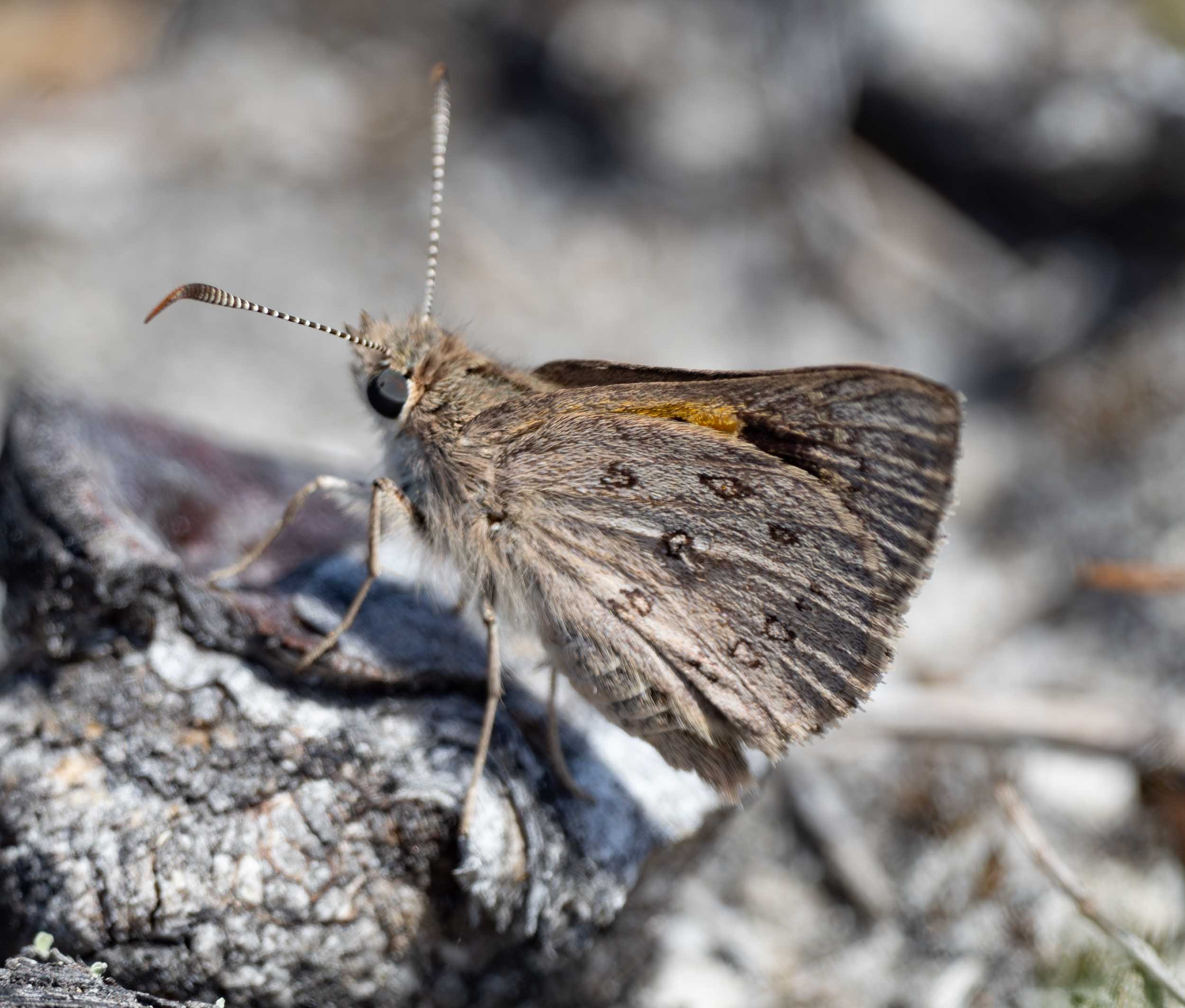
Heath Ochre butterfly
Trapezites phigalia
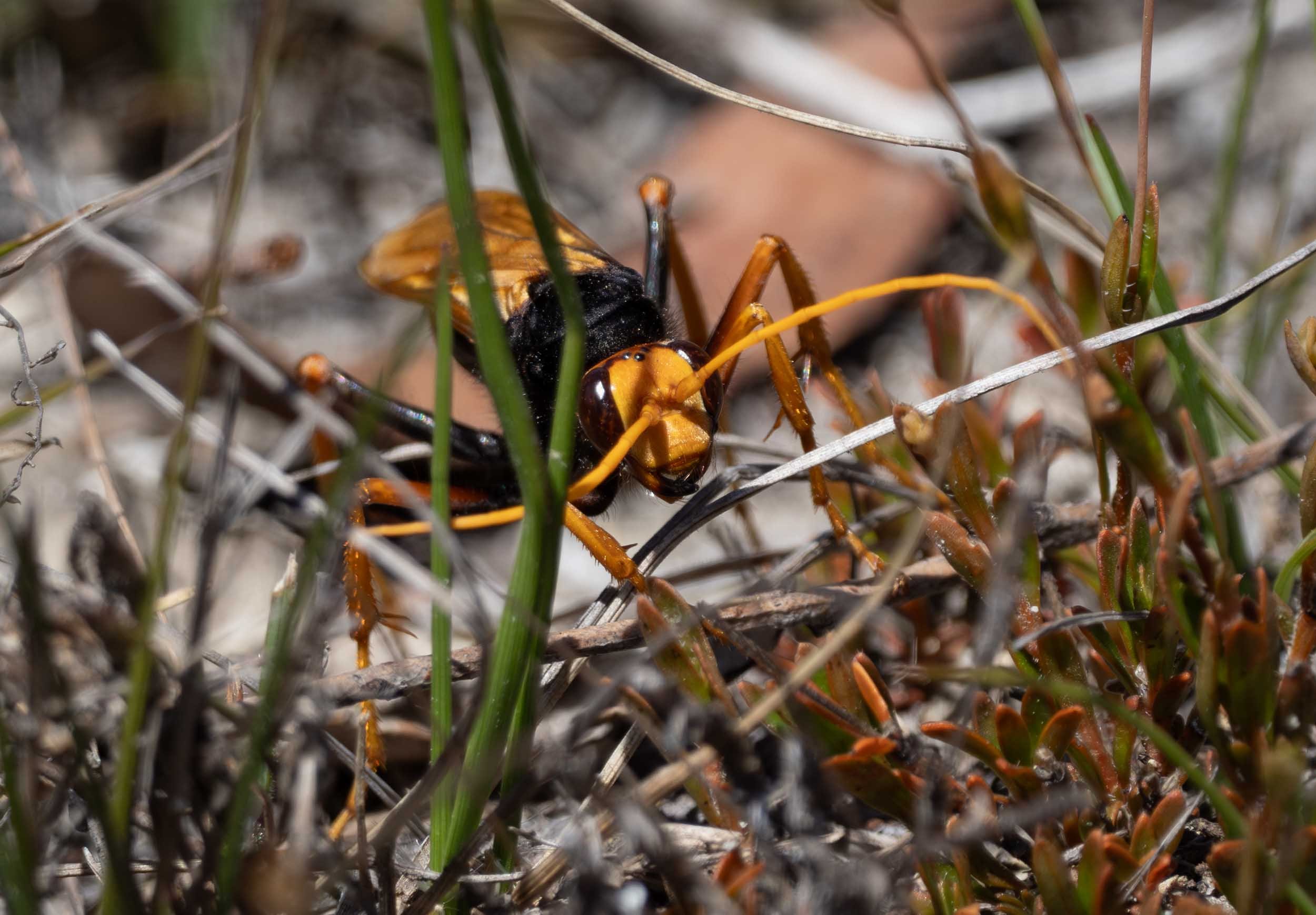
Cryptocheilus (HYMENOPTERA: Pompilidae), probably C. bicolor.
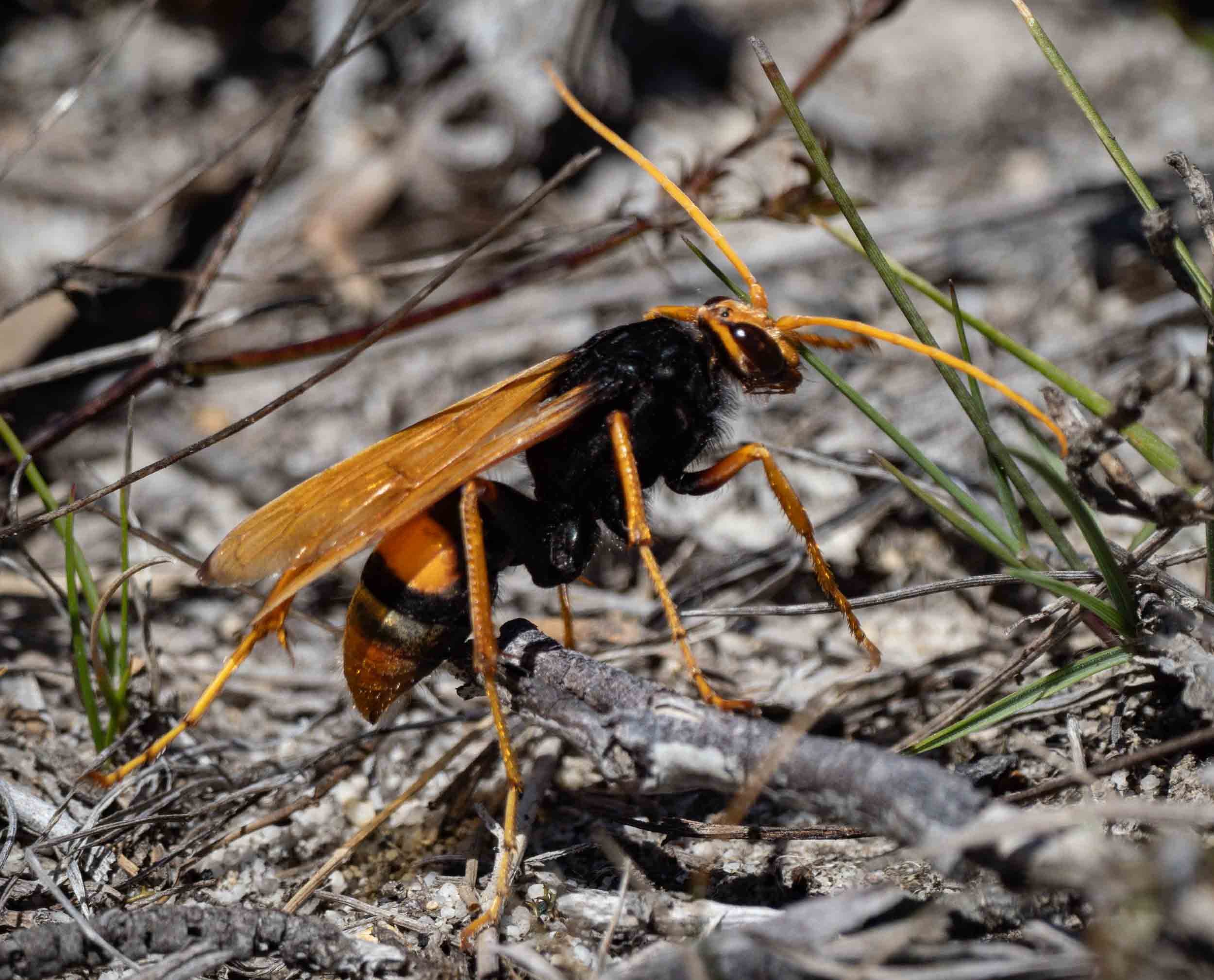
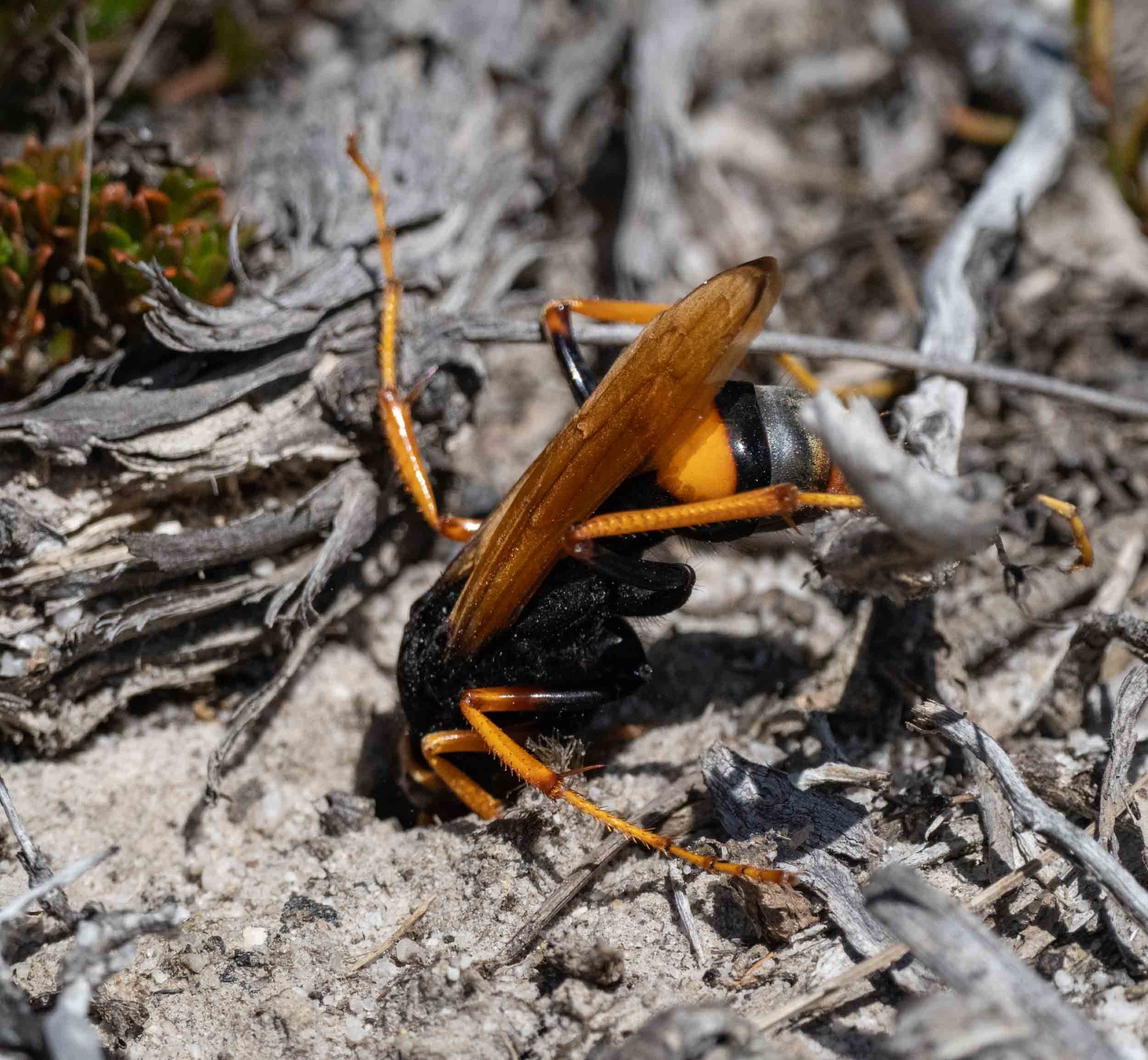

We saw her enter this same hole on two occasions. It could be her nest burrow. Cryptocheilus are known to construct multi-chambered nests, closing each cell but leaving the burrow open while out hunting.

She entered slowly, with apparent caution. Perhaps there’s a risk someone has moved in while she was away. A second after this photo, she disappeared inside and did not soon emerge.
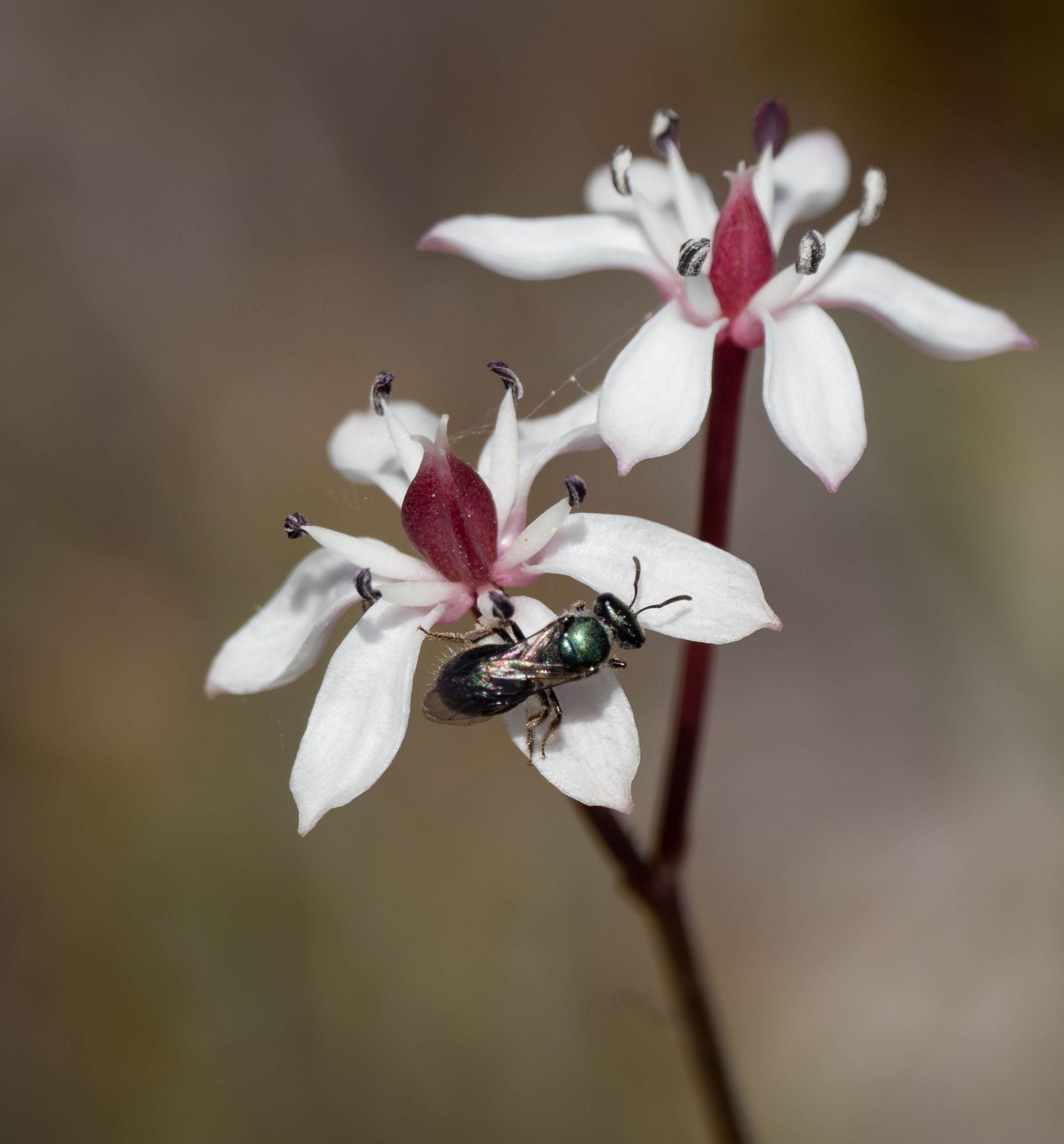
hhmmm … not sure about this one.

Lasioglossum (Chilalictus)
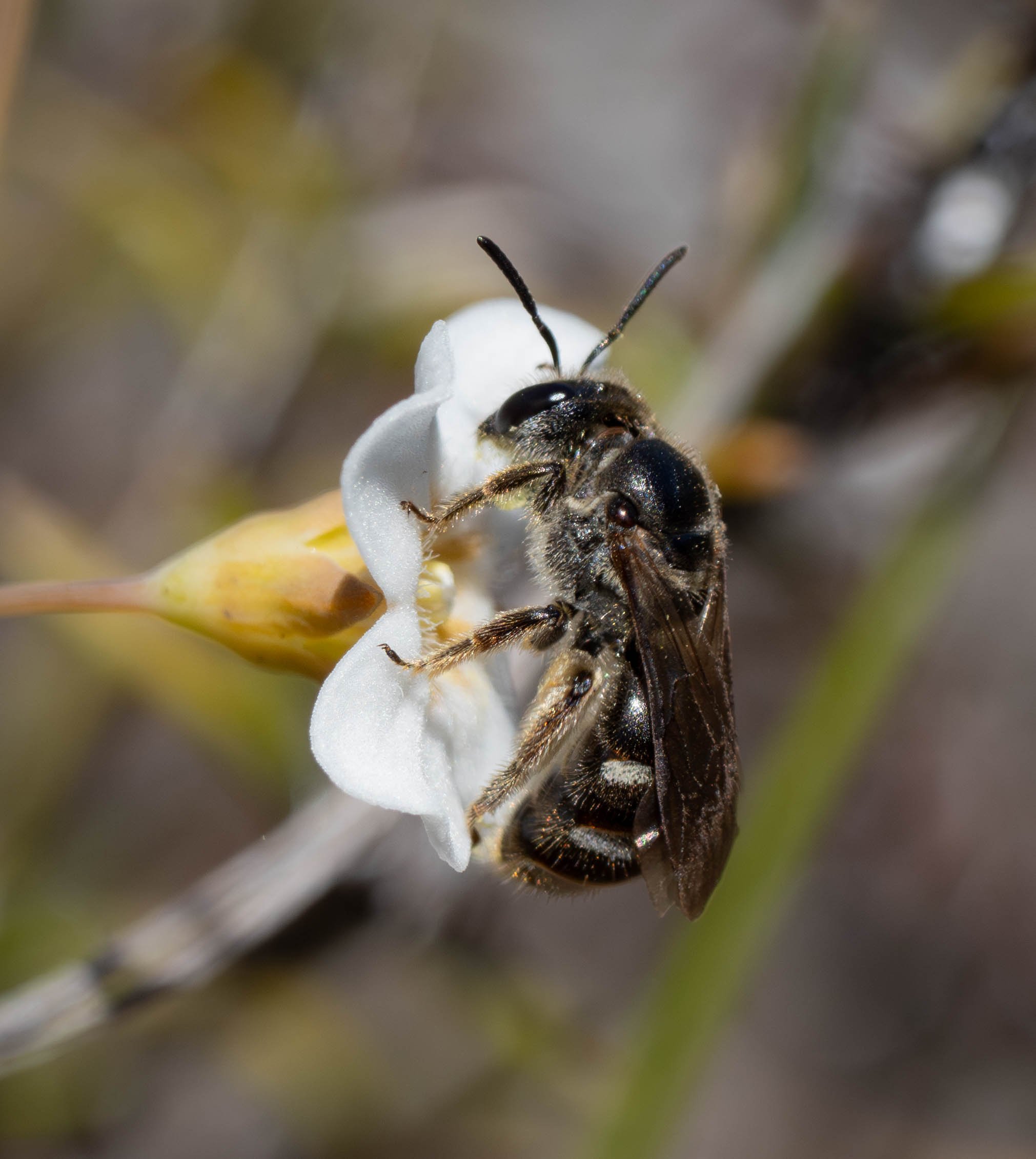
Lasioglossum (Chilalictus)

They enter and leave their burrows quickly. This was a rare shot, and shows the diagnostic wing venation nicely.
Lasioglossum (Chilalictus)
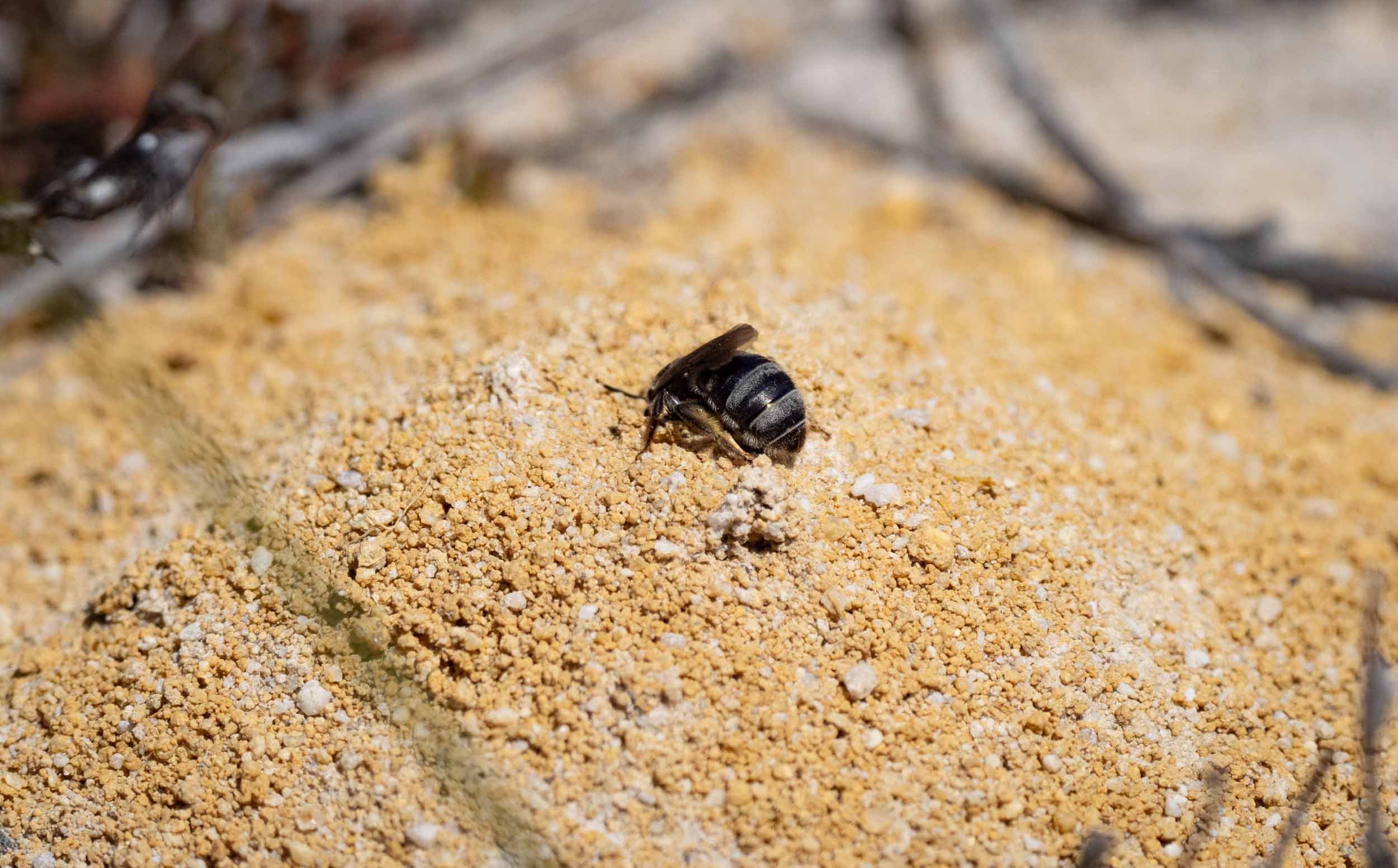
There were several nesting aggregations of these bees. Most nest entrances were surrounded by a large mound of tumulus. And they were clearly shared burrows – we often saw several females enter or leave in succession.
Lasioglossum (Chilalictus)

Lasioglossum (Chilalictus)

A small, orange wasp was investigating the Lasioglossum nests.
Labium sp.
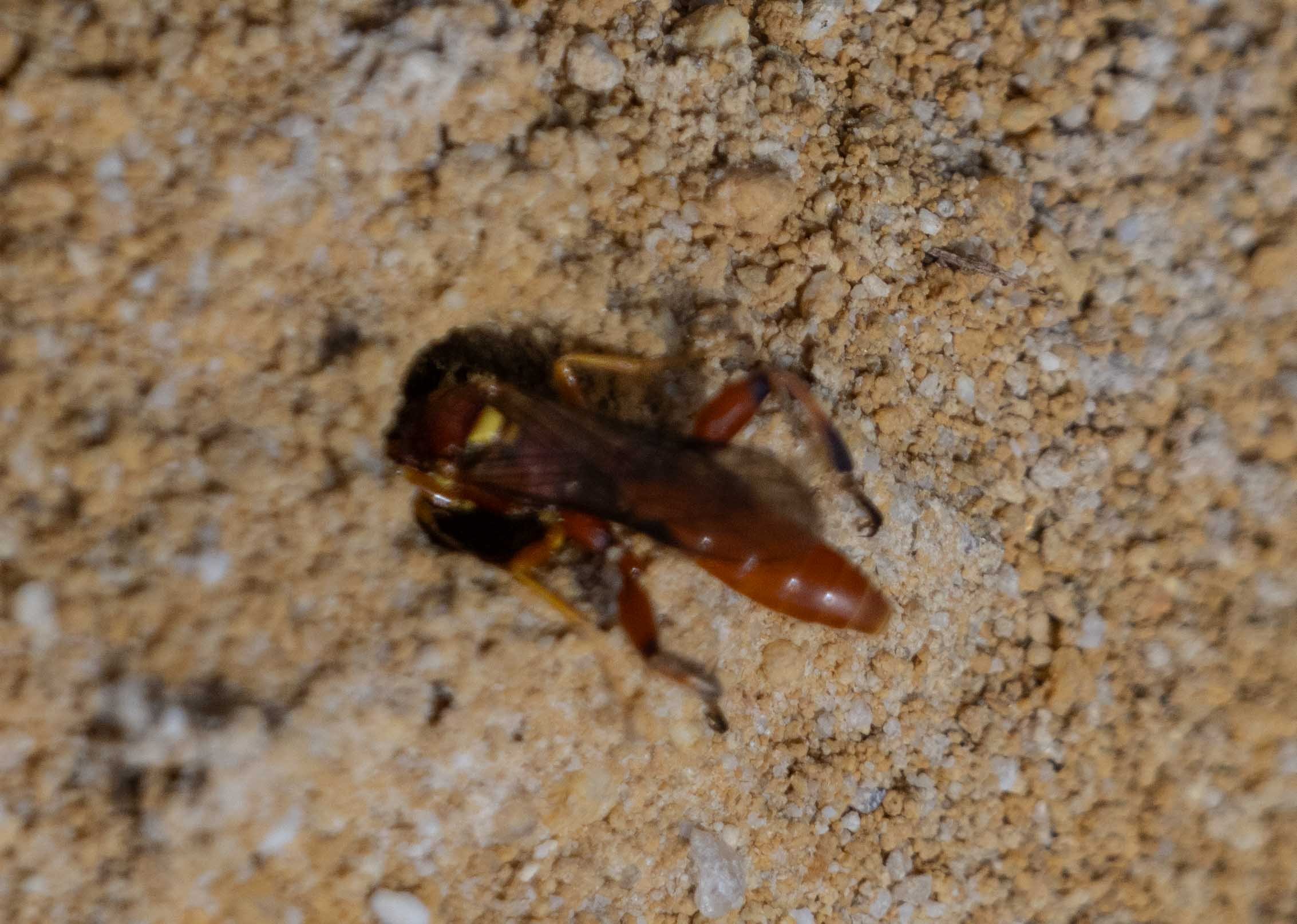
The next day we saw one at home for the first time (see iNat record) –and it is indeed a parasite of ground-nesting bees!
Labium sp.
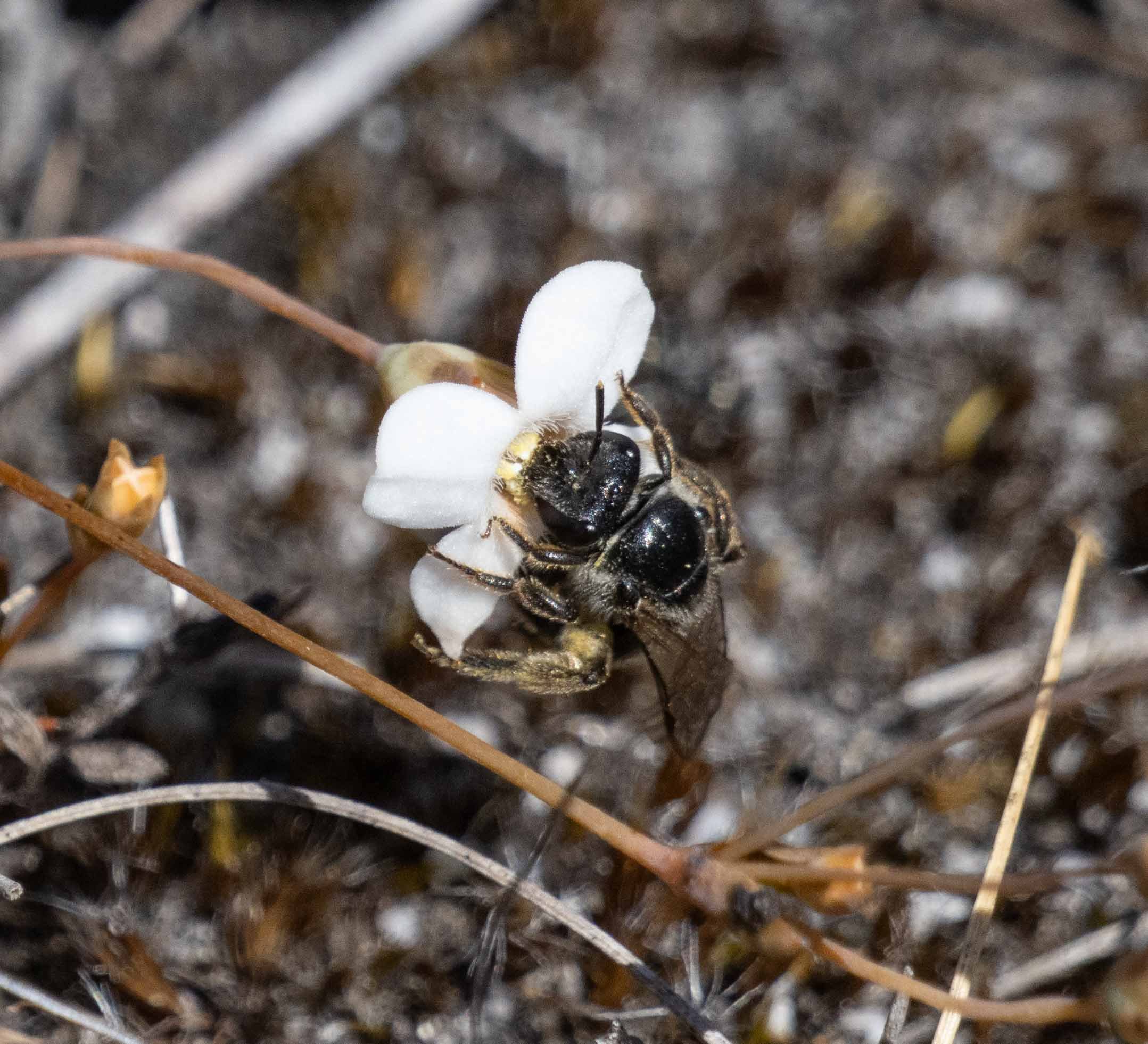
Lasioglossum (Chilalictus)
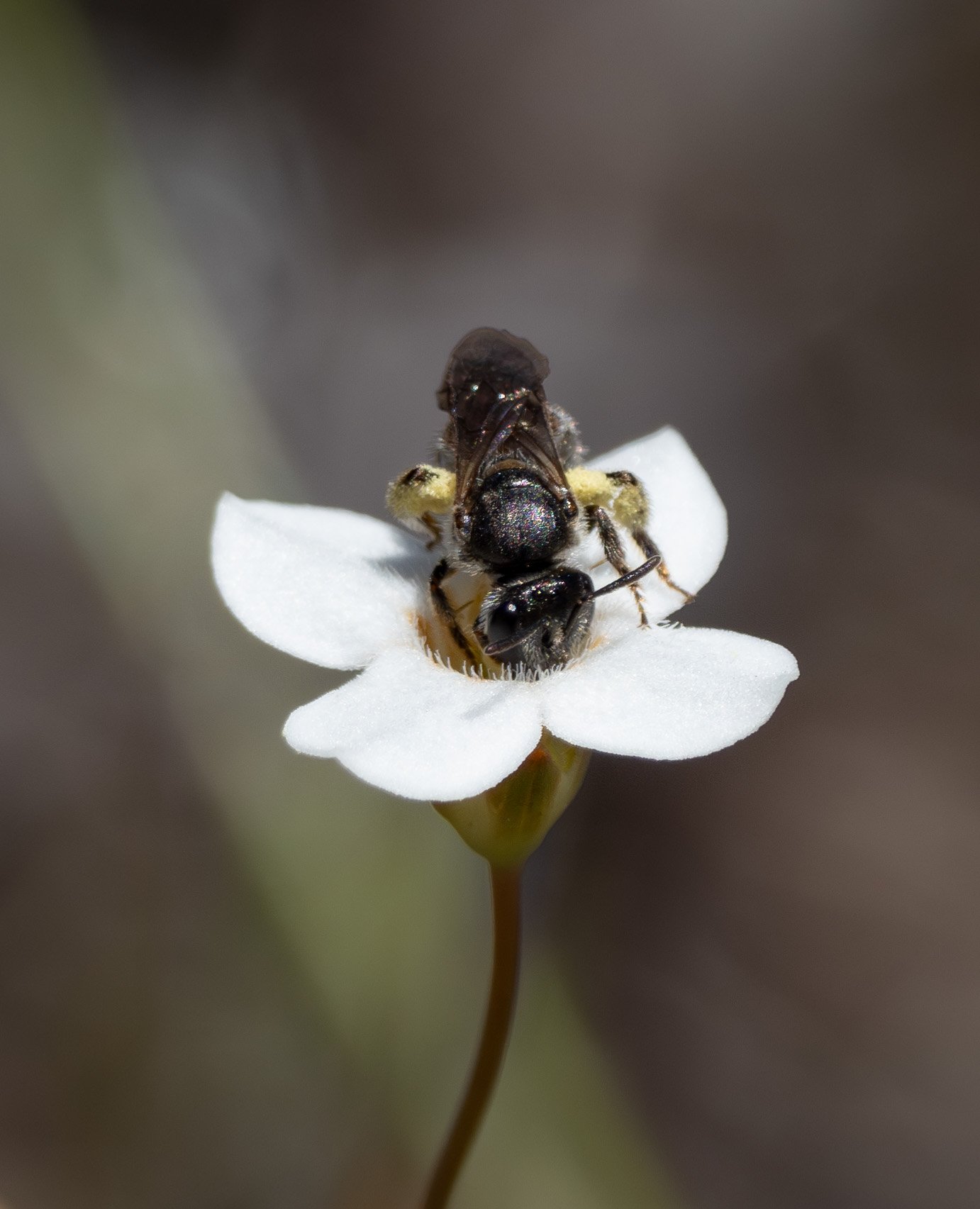
Same subgenus, but an obviously a different species
Lasioglossum (Chilalictus)
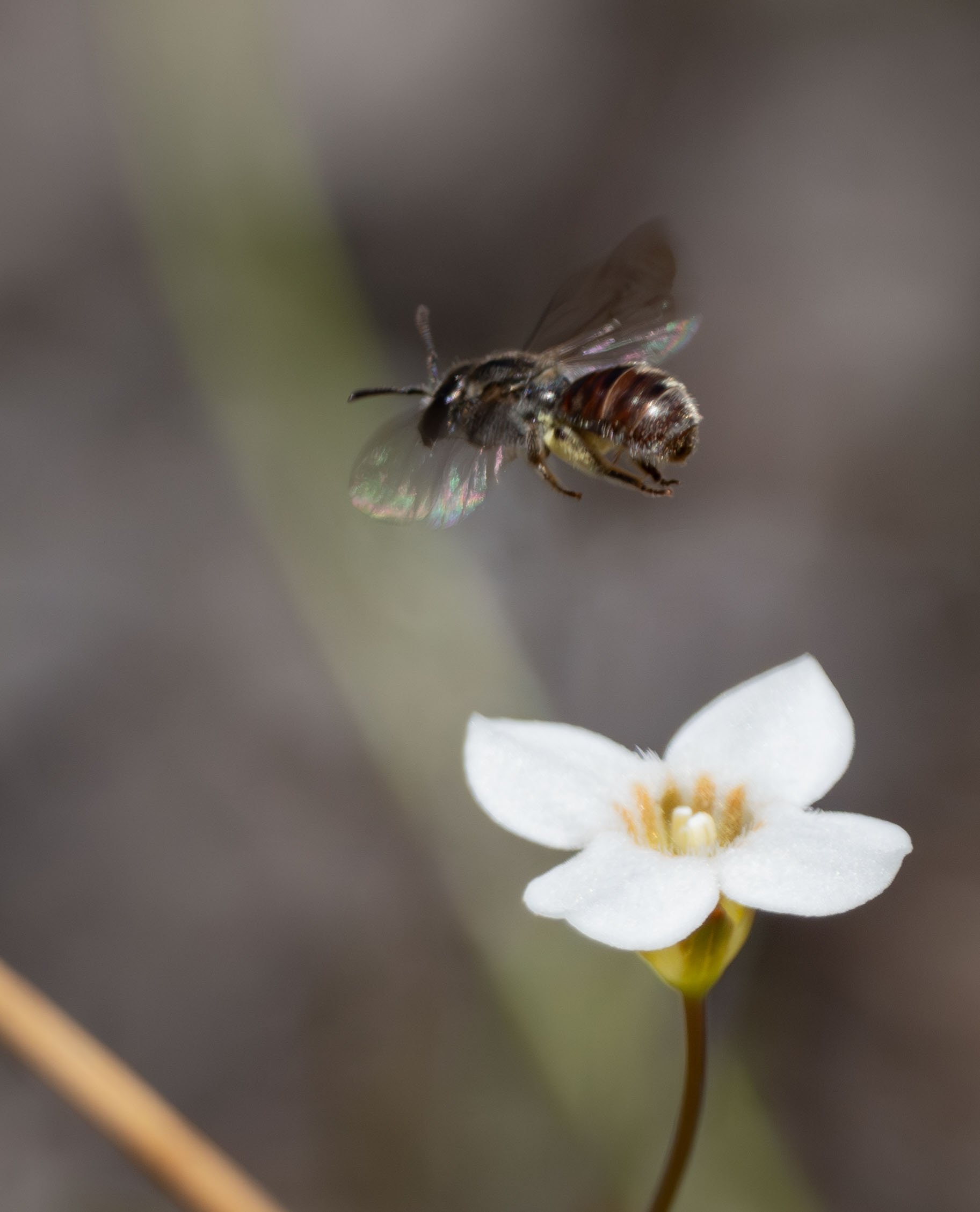
Lasioglossum (Chilalictus)




















